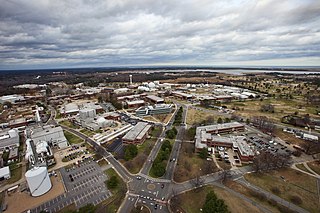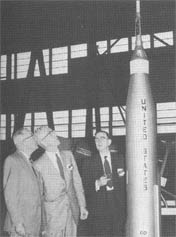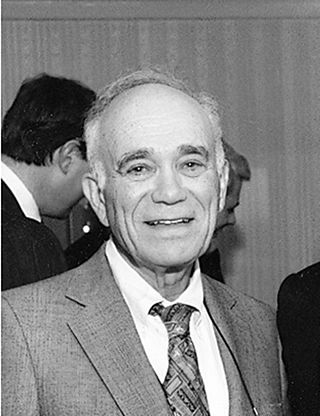CiteSeerX is a public search engine and digital library for scientific and academic papers, primarily in the fields of computer and information science.

The National Advisory Committee for Aeronautics (NACA) was a United States federal agency that was founded on March 3, 1915, to undertake, promote, and institutionalize aeronautical research. On October 1, 1958, the agency was dissolved and its assets and personnel were transferred to the newly created National Aeronautics and Space Administration (NASA). NACA is an initialism, i.e., pronounced as individual letters, rather than as a whole word.

The National Technical Information Service (NTIS) is an agency within the U.S. Department of Commerce. The primary mission of NTIS is to collect and organize scientific, technical, engineering, and business information generated by U.S. government-sponsored research and development, for private industry, government, academia, and the public. The systems, equipment, financial structure, and specialized staff skills that NTIS maintains to undertake its primary mission allow it to provide assistance to other agencies requiring such specialized resources.

The Langley Research Center, located in Hampton, Virginia, near the Chesapeake Bay front of Langley Air Force Base, is the oldest of NASA's field centers. LaRC has focused primarily on aeronautical research but has also tested space hardware such as the Apollo Lunar Module. In addition, many of the earliest high-profile space missions were planned and designed on-site. Langley was also considered a potential site for NASA's Manned Spacecraft Center prior to the eventual selection of Houston, Texas.

Technical writing is a specialized form of communication used by many of today's industrial and scientific organizations to clearly and accurately convey complex information to a user. An organization's customers, employees, assembly workers, engineers, and scientists are some of the most common users who reference this form of content to complete a task or research a subject. Most technical writing relies on simplified grammar, supported by easy-to-understand visual communication to clearly and accurately explain complex information.
A technical report is a document that describes the process, progress, or results of technical or scientific research or the state of a technical or scientific research problem. It might also include recommendations and conclusions of the research. Unlike other scientific literature, such as scientific journals and the proceedings of some academic conferences, technical reports rarely undergo comprehensive independent peer review before publication. They may be considered as grey literature. Where there is a review process, it is often limited to within the originating organization. Similarly, there are no formal publishing procedures for such reports, except where established locally.
A bibliographic database is a database of bibliographic records. This is an organised online collection of references to published written works like journal and newspaper articles, conference proceedings, reports, government and legal publications, patents and books. In contrast to library catalogue entries, a majority of the records in bibliographic databases describe articles and conference papers rather than complete monographs, and they generally contain very rich subject descriptions in the form of keywords, subject classification terms, or abstracts.

Ira H. Abbott was an American aerospace engineer. After graduating from MIT, Abbott started working for Langley Aeronautical Laboratory in 1929. He contributed significantly to the establishment of high-speed research programs and published numerous technical reports on aerodynamics. He eventually attained the post of assistant chief of research at Langley in 1945.
Cambridge Scientific Abstracts was a division of Cambridge Information Group and provider of online databases, based in Bethesda, Maryland, before merging with ProQuest of Ann Arbor, Michigan, in 2007. CSA hosted databases of abstracts and developed taxonomic indexing of scholarly articles. These databases were hosted on the CSA Illumina platform and were available alongside add-on products like CSA Illustrata. The company produced numerous bibliographic databases in different fields of the arts and humanities, natural and social sciences, and technology. Thus, coverage included materials science, environmental sciences and pollution management, biological sciences, aquatic sciences and fisheries, biotechnology, engineering, computer science, sociology, linguistics, and other areas.
CENDI is an interagency group of senior Scientific and Technical Information (STI) managers from 14 United States federal agencies. CENDI managers cooperate by exchanging information and ideas, collaborating to address common issues, and undertaking joint initiatives. CENDI's accomplishments range from impacting federal information policy to educating a broad spectrum of stakeholders on all aspects of federal STI systems, including its value to research and the taxpayer, and to operational improvements in agency and interagency STI operations.
Science.gov is a web portal and specialized search engine. Using federated search technology, Science.gov serves as a gateway to United States government scientific and technical information and research. Currently in its fifth generation, Science.gov provides a search of over 60 databases from 14 federal science agencies and 200 million pages of science information with just one query, and is a gateway to 2,200+ scientific websites.
AGRIS is a global public domain database with more than 12 million structured bibliographical records on agricultural science and technology. It became operational in 1975 and the database was maintained by Coherence in Information for Agricultural Research for Development, and its content is provided by more than 150 participating institutions from 65 countries. The AGRIS Search system, allows scientists, researchers and students to perform sophisticated searches using keywords from the AGROVOC thesaurus, specific journal titles or names of countries, institutions, and authors.
The OpenSIGLE repository provides open access to the bibliographic records of the former SIGLE database. The creation of the OpenSIGLE archive was decided by some major European STI centres, members of the former European network EAGLE for the collection and dissemination of grey literature. OpenSIGLE was developed by the French INIST-CNRS, with assistance from the German FIZ Karlsruhe and the Dutch Grey Literature Network Service (GreyNet). OpenSIGLE is hosted on an INIST-CNRS server at Nancy. Part of the open Access movement, OpenSIGLE is referenced by the international Directory of Open Access Repositories.

Richard Harbert Smith was a professor and researcher of aeronautical engineering at the Massachusetts Institute of Technology (MIT), from 1929 to 1945.
The Information Bridge: Department of Energy Scientific and Technical Information database provides free public access to over 298,000 full-text electronic documents of Department of Energy (DOE) research report literature. See list of academic databases and search engines.
Paul Richard Hill (1909–1990) was a mid–twentieth-century American aerodynamicist. He was a leading research and development engineer and manager for NASA and its predecessor, NACA between 1939 and 1970, retiring as Associate Chief, Applied Materials and Physics Division at the NASA Langley Research Center. He is arguably most widely known today as the author of Unconventional Flying Objects: a Scientific Analysis.
NASA Alumni League is a U.S. organization that supports people that have worked for or at NASA or its predecessor NACA, to stay connected, and to "support the nation's space programs with technical expertise, educational outreach, and financial contributions to STEM organizations." The organization operates across the nation, also with state chapters that allow patrons to network locally. Three goals of NAL in the early 21st century were to "communicate with the NASA community", "to aid the NASA community with its comprehension of engineering and science, and "encourage members to participate in community service and in turn, encourage a dedication to the pursuit of scientific knowledge that benefits all humankind. " NAL is not part of NASA or the U.S. government, it is a non-profit organization founded in 1986.

CORE is a service provided by the Knowledge Media Institute based at The Open University, United Kingdom. The goal of the project is to aggregate all open access content distributed across different systems, such as repositories and open access journals, enrich this content using text mining and data mining, and provide free access to it through a set of services. The CORE project also aims to promote open access to scholarly outputs. CORE works closely with digital libraries and institutional repositories.

Pearl Irma Young became the first female technical employee of the National Advisory Committee for Aeronautics (NACA), which evolved to become today's NASA. She became Chief Technical Editor at NACA's Langley Instrument Research Laboratory, and an engineering professor.

Prof. Alfred Gessow was an American pioneer in the field of helicopter aerodynamics and aerospace engineering. He was a co-author of the early rotorcraft engineering text Aerodynamics of the Helicopter, which, although published in 1952, has been in print for more than 50 years. Gessow was chair of the Department of Aerospace Engineering at the University of Maryland, College Park, and was ultimately promoted to professor emeritus.









